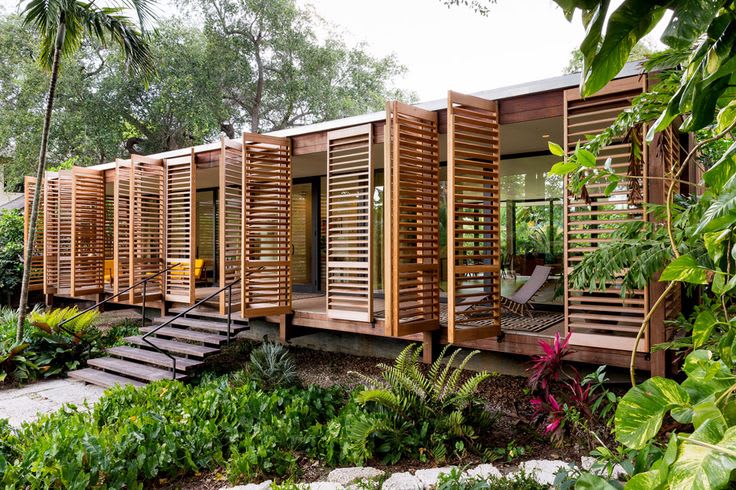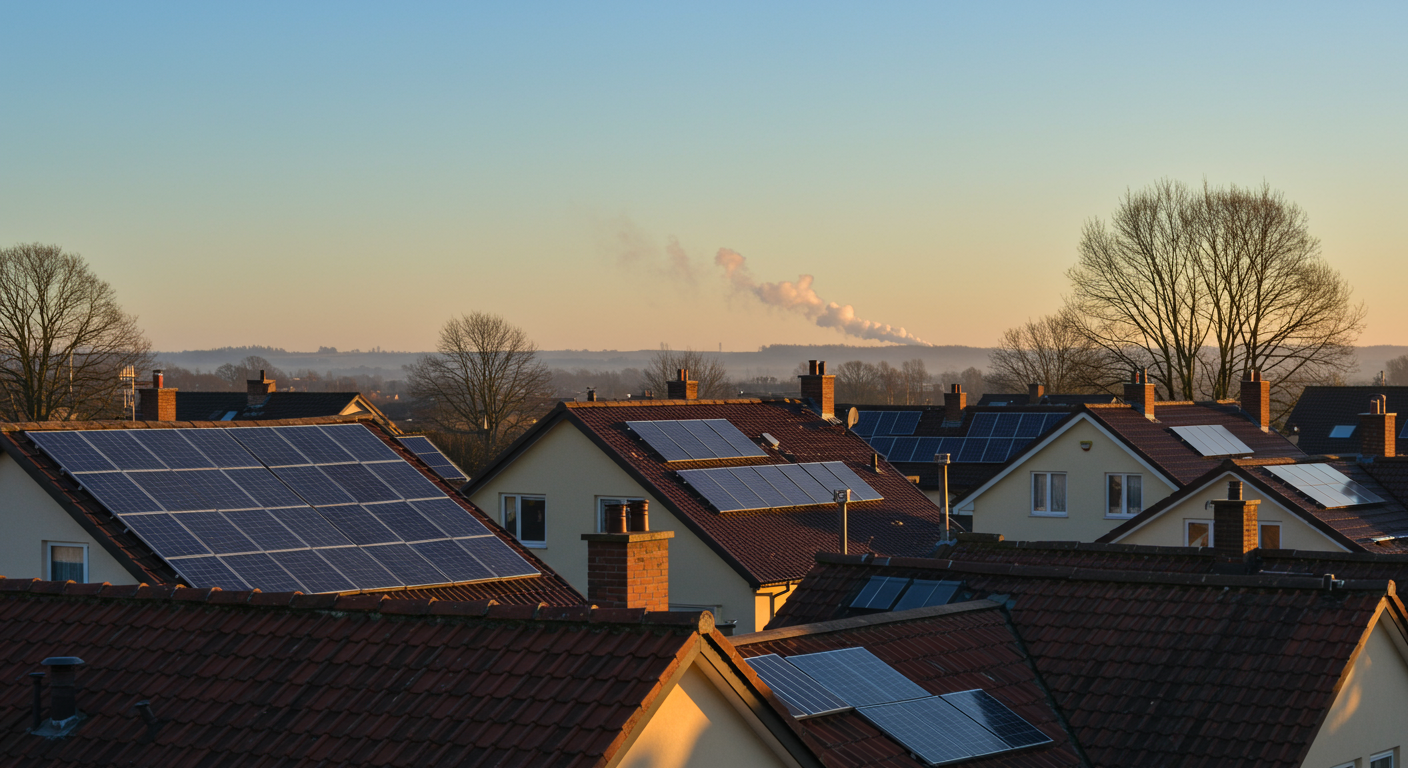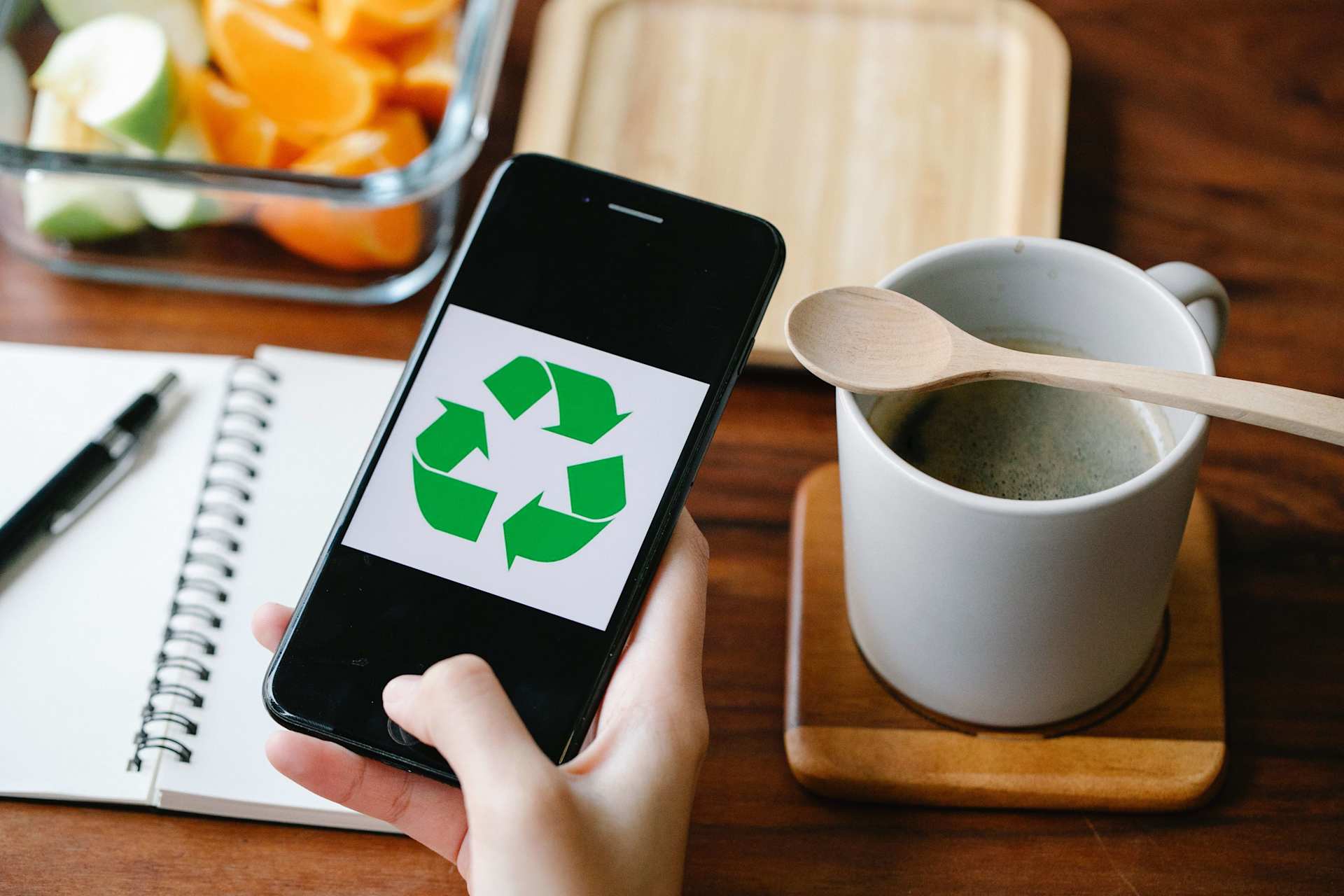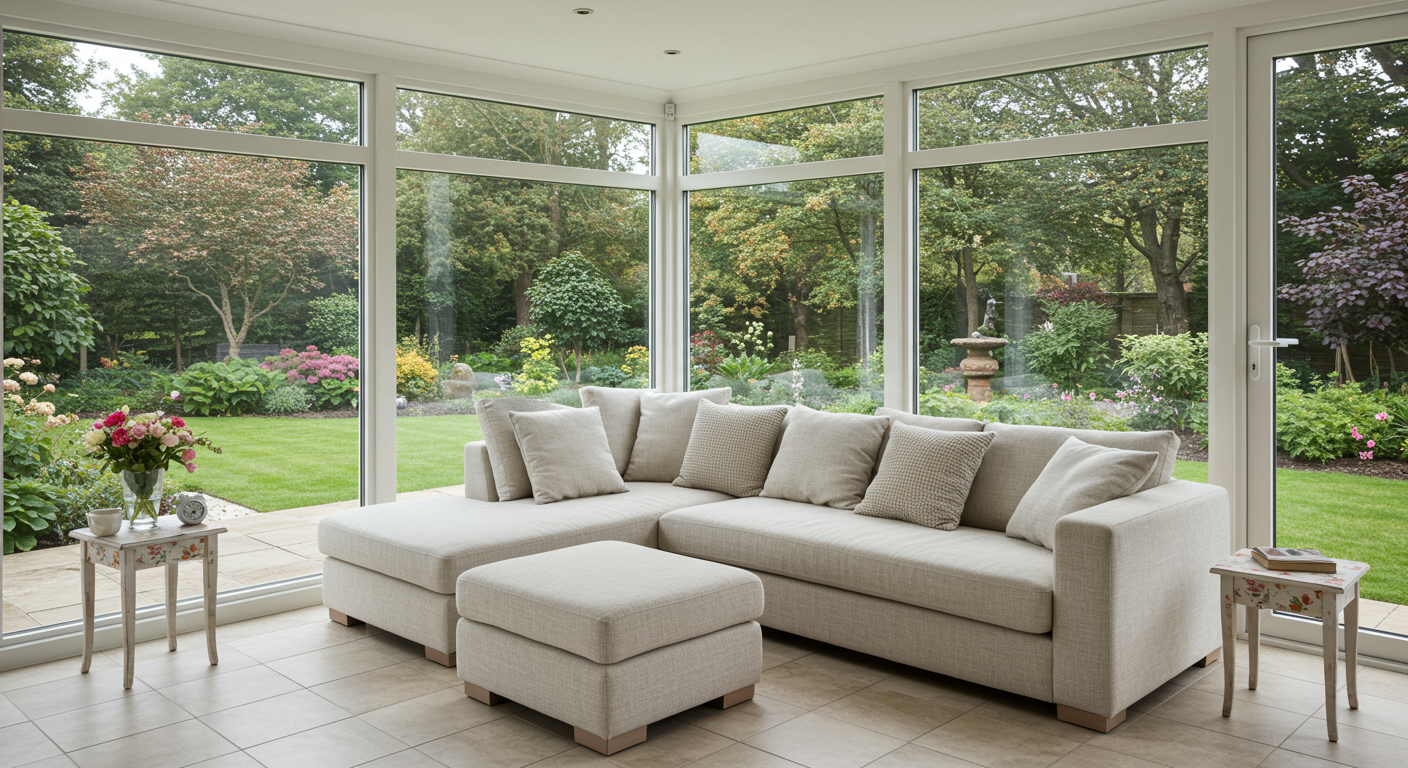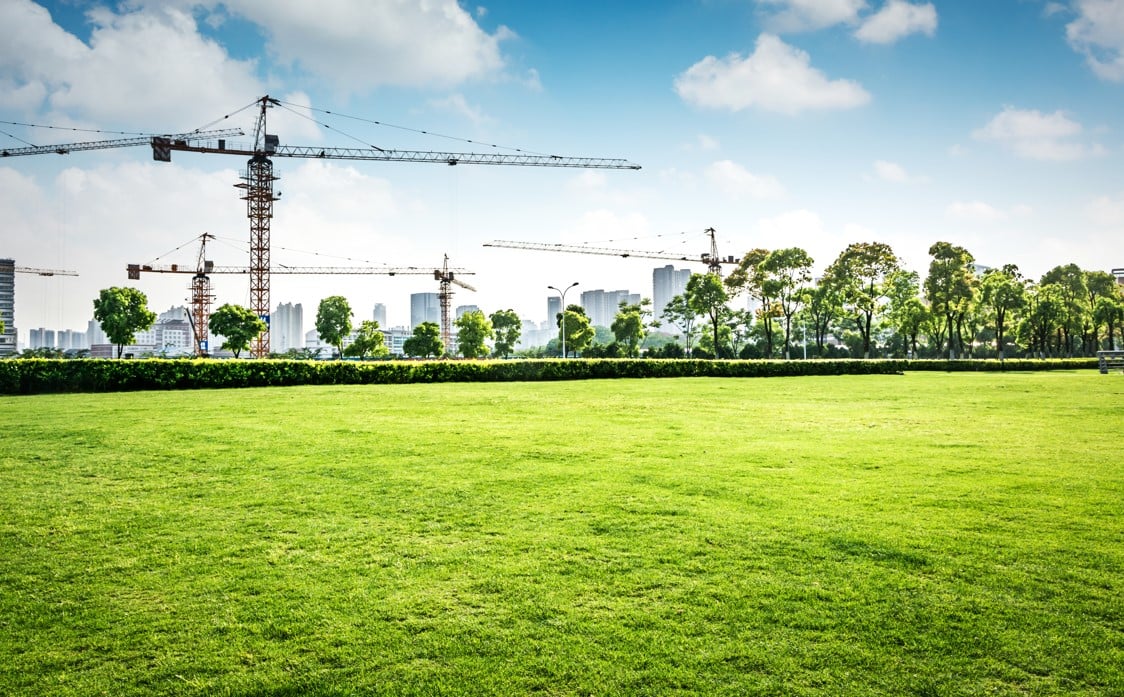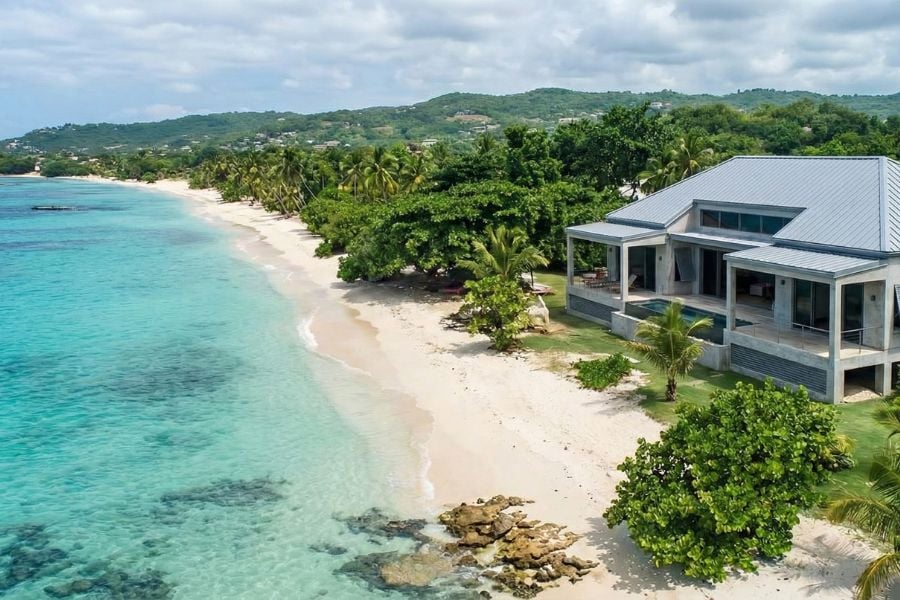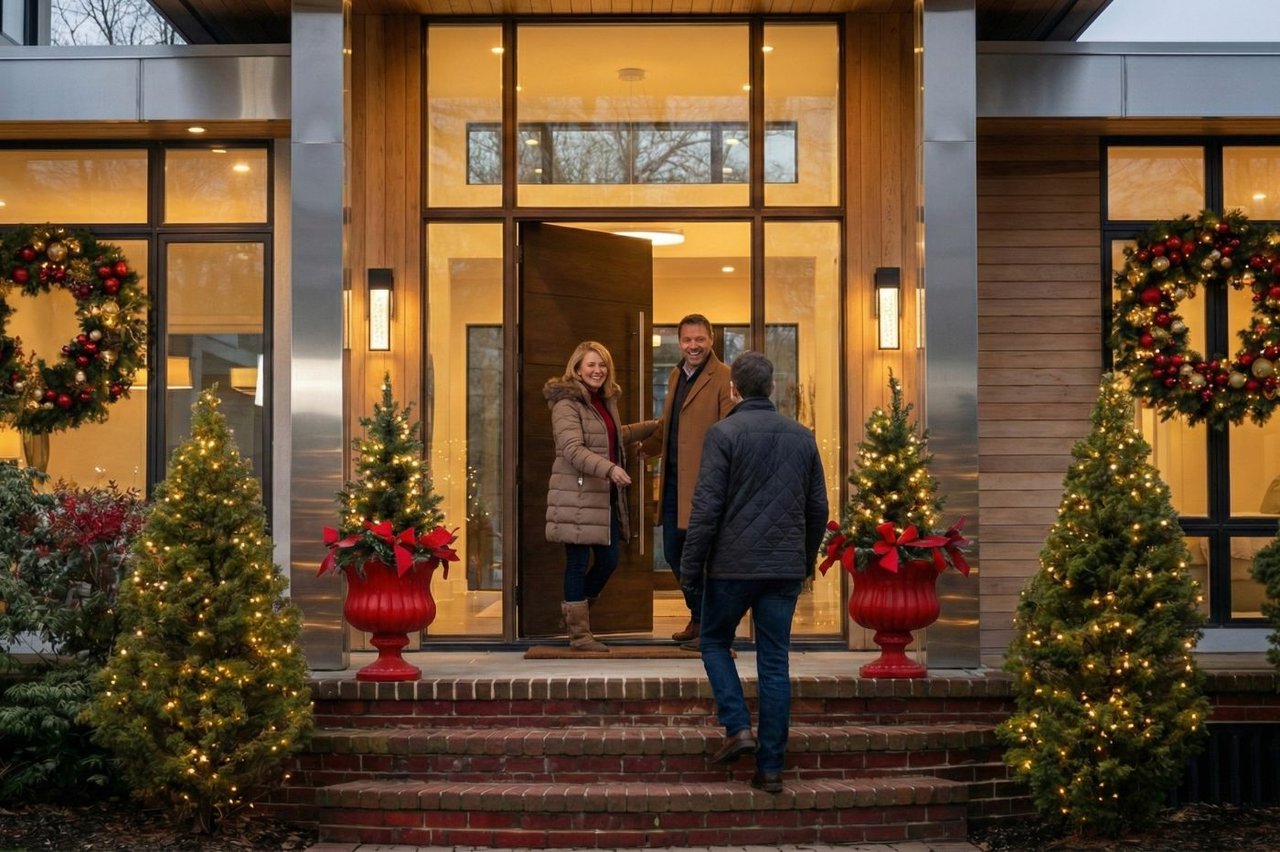Luxury houses today are increasingly incorporating a range of efficient and eco-friendly features. These developments are driven by a growing awareness of environmental issues and a desire for healthier, more comfortable, and more sustainable living spaces. This shift has also increased interest in sustainable homes for sale, offering eco-conscious buyers options that align with their values.
In this blog, we delve deeper into the number of ways in which high-end residential architecture is evolving to meet the demands of the modern homeowner, who seeks not only opulence and style but also a commitment to sustainability and environmental responsibility.
Key Takeaways
- Luxury homes are incorporating renewable energy sources like solar panels and wind turbines to reduce their carbon footprint and energy costs, reflecting the rising demand for sustainable houses for sale that appeal to eco-conscious buyers.
- Advanced smart home technologies enhance luxury residences' convenience, efficiency, and security.
- Sustainable materials such as reclaimed wood and low-VOC paints are increasingly used in luxury home construction to promote environmental stewardship.
- Improved indoor air quality and thermal insulation are key features in modern luxury homes, contributing to healthier and more comfortable living spaces.
Key Trends in Modern Development
Some of the key trends in this area include:
Green Building Techniques: Advancing Sustainable Luxury Homes
As the demand for sustainable luxury homes grows, builders are increasingly turning to green building techniques that prioritize environmental responsibility without sacrificing luxury. These techniques include:
-
Enhanced Insulation: High-performance insulation materials, like spray foam or cellulose, offer superior energy efficiency, keeping homes warmer in the winter and cooler in the summer.
-
Energy-Efficient Designs: Homes are designed with passive solar heating, natural ventilation, and optimized window placement to reduce reliance on heating and cooling systems.
-
Sustainable Materials: Luxury homes increasingly incorporate reclaimed wood, bamboo, and recycled steel, reducing waste and minimizing environmental impact while maintaining aesthetic appeal.
-
Smart Energy Systems: Solar panels, energy-efficient HVAC systems, and home automation technologies optimize energy usage.
Renewable Energy Sources
Many luxury Puerto Rico homes for sale are leading the way in luxury green living, integrating renewable energy sources like active solar systems and wind turbines. This reduces the carbon footprint and can significantly lower energy costs in the long term.
1. Photovoltaic (PV) Solar Panels
These are the most common forms of solar energy in homes. Luxury properties often feature state-of-the-art solar panels that blend with the design aesthetics, ensuring they are functional and visually appealing.
2. Solar Shingles and Tiles
An innovative alternative to traditional rooftop solar panels, solar shingles, and tiles integrate photovoltaic cells directly into roofing materials, offering a more seamless and stylish appearance.
3. Solar Water Heating
This system uses solar energy to heat water, which can be used for showers, pools, and spas, significantly reducing the reliance on traditional heating methods.
4. Residential Wind Turbines
These are becoming more prevalent in luxury homes, especially in areas with consistent wind patterns. Modern turbines are designed to be quieter and more aesthetically pleasing, making them suitable for residential areas.
5. Geothermal Heat Pumps
These systems use the stable temperature of the earth a few feet underground to provide heating in the winter and cooling in the summer. Geothermal energy is highly efficient and can significantly lower heating and cooling costs.
6. Micro-hydro Power Systems
Micro-hydro power can be a viable option in properties located near a water source. These systems harness the energy of flowing water to generate electricity, offering a continuous and reliable energy source.
7. Energy-Generating Glass
Some luxury homes incorporate windows and glass panels that generate solar energy, offering a dual function of energy generation and architectural beauty.
Off-Grid Living and Self-Sufficiency Options
For many eco-conscious buyers exploring eco-friendly houses for sale in Puerto Rico, off-grid living is not just a lifestyle choice—it’s a strategic investment in sustainability and resilience. These luxury homes are designed to operate independently from conventional utilities while maintaining comfort, style, and modern conveniences.
Key Off-Grid Features:
-
Solar Power with Battery Storage: Advanced systems, such as Tesla Powerwall or similar battery solutions, store excess solar energy for use during nighttime or outages.
-
Rainwater Harvesting & Filtration: Roof catchment systems paired with high-efficiency filters provide clean water for household use, often supported by UV or carbon filtration.
-
Greywater Recycling: Water from sinks, showers, and laundry is filtered and reused for landscaping and irrigation, reducing water waste.
-
Composting Toilets & Low-Flow Fixtures: Waterless or low-water toilet systems, paired with efficient fixtures, significantly cut water use.
-
Satellite or Mesh Internet Connectivity: Reliable communication systems ensure high-speed internet in remote or rural areas without dependency on land-based infrastructure.
Off-Grid Capability Matrix
| System | Purpose | Benefit |
|---|---|---|
| Solar + Battery Storage | Independent power supply | 24/7 energy availability, even during blackouts |
| Rainwater Harvesting | Alternative water source | Reduces reliance on municipal water systems |
| Greywater Recycling | Reuse of household wastewater | Eco-friendly landscaping and water savings |
| Composting Toilets | Off-grid waste management | Cuts water usage and supports sustainable living |
| Satellite/Mesh Internet | Remote connectivity | Maintains digital access without cable providers |
Eco-friendly houses for sale that incorporate these systems are ideal for buyers seeking privacy, resilience, and reduced environmental impact while enjoying the benefits of modern living in Puerto Rico’s beautiful and diverse landscapes.
Smart Home Technology
Integrating advanced home automation systems in sustainable luxury homes is revolutionizing how residents interact with their living environments, blending eco-conscious technology with convenience and style. These smart technologies offer unparalleled convenience, efficiency, and security, enhancing the overall quality of life.
1. Convenience and Comfort Automation
- Automated Lighting Systems: Including smart lighting control, motion-activated lighting, and automated blinds and shades.
- Climate Control and HVAC Automation: Featuring smart thermostats and zone-based temperature control for personalized comfort.
- Home Entertainment and Audio-Visual Systems: Integrating centralized control of TVs, sound systems, and multi-room audio systems.
- Voice-Controlled Assistants and Automation: Allowing residents to manage various home functions through voice commands.
2. Security and Surveillance Systems
- Advanced Security Systems: Comprising high-definition cameras, motion sensors, and automated alarms, all operable remotely.
- Smart Locks and Access Control: Offering keyless entry and customizable access for individuals.
- Home Networking and Connectivity: Ensuring secure and robust Wi-Fi systems is crucial for the operation of all smart home devices.
3. Energy Management and Efficiency:
- Smart Appliances and Kitchen Technology: Including connected energy-efficient appliances and automated cooking devices that contribute to energy conservation.
- Energy Management Systems: Smart meters and energy monitors that track and optimize home energy use.
- Smart Irrigation Systems: For efficient management of landscaping and garden watering needs, often responsive to weather conditions.
Sustainable Materials
Using sustainable materials in luxury homes is a growing trend, reflecting a commitment to environmental stewardship and healthy living. These materials are chosen not only for their low environmental impact but also for their aesthetic appeal and durability.
Below is a table that shows the sustainable materials being used in your luxurious eco-friendly house:
|
Material Type |
Examples |
Benefits |
Usage in Homes |
|
Recycled/Reclaimed Materials |
Reclaimed Wood, Recycled Steel, Recycled Glass and Plastic |
Adds character, reduces new resource extraction, reduces waste |
Flooring, beams, paneling, structural elements |
|
Sustainable Wood and Bamboo |
Certified Sustainable Wood, Bamboo |
Renewable, durable, modern appearance |
Flooring, cabinetry, decorative features |
|
Natural Stone and Tiles |
Locally Sourced Stone, Recycled/Sustainable Tiles |
Reduces carbon emissions, supports local industries, versatile designs |
Flooring, wall tiles, decorative elements |
|
Eco-Friendly Insulation |
Recycled Cotton/Denim, Sheep's Wool Insulation |
Excellent thermal performance, free from harmful chemicals |
Wall and attic insulation |
|
Low-VOC and Natural Paints |
Low-VOC Paints, Natural Paints |
Improves indoor air quality, environmentally friendly |
Interior and exterior painting |
|
Green Roof Materials |
Living Roofs, Recycled Shingles |
Insulation reduces runoff, supports biodiversity |
Roofing |
|
Sustainable Flooring Options |
Cork Flooring, Linoleum |
Renewable, comfortable, natural insulation |
Flooring |
|
Energy-Efficient Windows and Doors |
FSC-Certified Wood/Recycled Frames, High-Performance Glass |
Sustainable sourcing minimizes heat transfer |
Windows and doors |
|
Eco-Friendly Fabrics and Furnishings |
Organic Cotton, Wool, Hemp |
Sourced from organic, sustainable practices |
Upholstery, curtains, bedding |
Ergonomic Design
Ergonomic design in luxury homes focuses on creating spaces that are not only aesthetically pleasing but also tailored to the comfort and ease of the inhabitants. This approach considers the human body's needs and movement patterns to minimize discomfort and strain.
1. Kitchens
- Customized counter heights for comfortable food preparation.
- Pull-out cabinets and drawers for easy access.
- Ergonomically designed appliances placed at convenient heights.
2. Bathrooms
- Walk-in showers with adjustable showerheads and built-in seating.
- Comfort-height toilets for reduced strain on knees and back.
- Ergonomic bathtub designs with supportive contours.
3. Living and Dining Areas
- Furniture tailored to the user’s size, offering support to the back and neck.
- Adjustable energy-efficient lighting to reduce eye strain, including dimming and task lighting options.
4. Home Offices
- Adjustable desks and chairs to ensure a comfortable working posture.
- Monitor placement at eye level to reduce neck strain and minimize eye strain.
5. Bedrooms
- Adjustable bed bases that allow for changes in position, facilitating activities like reading or watching TV comfortably.
- Closet designs with rods and shelves at reachable heights, including built-in organizers for easy access.
Indoor Air Quality Improvement
Improvement of indoor air quality in luxury homes has become a crucial aspect of modern home design. This reflects an increased awareness of the health impacts of indoor pollutants and the desire for a cleaner, healthier living environment. Advanced air conditioning, purification, and ventilation systems play a significant role in achieving this goal.
1. Advanced Air Purification Systems
- HEPA Filters: High-efficiency particulate Air (HEPA) filters can trap extremely small particles, effectively removing dust, pollen, mold spores, and other airborne irritants.
- Activated Carbon Filters: These filters are excellent at absorbing gases and odors, such as VOCs (Volatile Organic Compounds) from paints, furniture, and carpets.
- UV Light Purification: Some systems use UV light to kill bacteria, viruses, and other pathogens, ensuring a germ-free indoor environment.
- Ionic Purifiers and Electrostatic Filters: These technologies capture pollutants by electrically charging air particles, making them easier to trap.
2. Improved Ventilation Systems
- Heat Recovery Ventilators (HRVs) and Energy Recovery Ventilators (ERVs): These systems provide fresh air while retaining energy used for heating or cooling, making them particularly effective in maintaining a comfortable and healthy indoor climate.
- Demand-Controlled Ventilation (DCV): This technology adjusts the ventilation based on the occupancy and pollutant levels in the home, ensuring optimal air quality without unnecessary energy use.
3. Natural Air Purification Methods
- Indoor Plants: Certain plants are known to naturally purify air, absorbing CO2, releasing oxygen, and filtering out certain pollutants.
- Eco-Friendly Materials: To reduce indoor air pollution, using materials that emit fewer VOCs, such as low-VOC paints and sustainably sourced building materials.
Thermal Insulation and High-Performance Windows
Including thermal insulation and high-performance windows is a critical aspect of modern luxury home design, aiming to enhance energy efficiency and indoor comfort. These features are pivotal in maintaining a consistent indoor climate, reducing the need for extensive heating or cooling, and contributing to overall energy savings.
1. Thermal Insulation
- Advanced Insulating Materials: Luxury homes often use high-quality insulating materials such as spray foam, rigid foam boards, fiberglass, or cellulose. These materials have higher R-values, indicating better insulating properties.
- Comprehensive Coverage: Insulation is applied not just in obvious areas like walls and attics but also in floors, basements, and any potential thermal bridges (where heat is more likely to escape).
- Soundproofing: Besides thermal insulation, these materials often provide soundproofing benefits, a desirable feature in luxury homes.
2. High-Performance Windows
- Double or Triple Glazing: Windows in luxury homes often feature double—or triple-glazed panes, which create an insulating air gap that reduces heat transfer.
- Low-Emissivity (Low-E) Coatings: These microscopic coatings on windows reflect infrared light, keeping heat inside in winter and outside in summer. They also protect against UV rays, preventing furniture and fabrics from fading.
- Thermal Break Frames: Window frames designed with a thermal break reduce heat conduction and improve overall energy efficiency.
- Argon or Krypton Gas Fills: These inert gases, used in the space between double or triple-glazed windows, provide better insulation than regular air.
3. Sealing and Ventilation
- Air Sealing: Ensuring that all joints, seams, and points of potential air leakage are properly sealed is crucial in maintaining the efficiency of the insulation.
- Controlled Ventilation: While tight insulation improves energy efficiency, controlled ventilation is also important to maintain air quality. This can be achieved through systems like Heat Recovery Ventilators (HRVs) or Energy Recovery Ventilators (ERVs).
4. Energy Efficiency and Sustainability
- Reduced Energy Bills: Effective insulation and high-performance windows significantly lower the energy required for heating and cooling.
- Sustainability: By reducing energy consumption, these features contribute to the home’s overall environmental sustainability.
5. Comfort and Aesthetics
- Consistent Indoor Climate: These features help maintain a consistent and comfortable indoor temperature, regardless of external weather conditions.
- Aesthetic Integration: High-performance windows are designed to be aesthetically pleasing, fitting seamlessly into the luxurious design of the home.
Conclusion
Today, Luxury homes are more than mere symbols of opulence; they represent a harmonious blend of comfort, convenience, and environmental consciousness. The advancements in sustainable local materials, energy-efficient technologies, and smart home automation systems that we've explored transform these residences into eco-friendly sanctuaries. The seamless integration of ergonomic design, renewable energy sources, and advanced air purification systems ensures that these luxurious abodes are aesthetically pleasing, sustainably efficient, and supremely comfortable.
At Christie's International Real Estate Puerto Rico, we recognize and celebrate this new era of luxury living. Our portfolio includes a diverse range of properties that showcase these cutting-edge trends. We are also dedicated to assisting those who aspire to sell their Puerto Rico homes for sale or offer their exquisite homes for rent. Our expertise and deep understanding of the luxury real estate market position us uniquely to cater to your needs with unparalleled service and discretion.
If you want to step into the future of luxury living or offer your property in this dynamic market, we invite you to explore our services. Contact us today and embark on a journey to redefine luxury living.
FAQs
What is the difference between eco-friendly and sustainable building?
Eco-Friendly Building: Eco-friendly buildings are designed to have minimal negative environmental impact. This can include using non-toxic materials, recycling construction waste, and ensuring energy efficiency. The focus is reducing the building's carbon footprint and promoting a healthier environment.
Sustainable Building: Sustainable buildings take a broader approach, incorporating both environmental aspects and economic and social sustainability. This includes efficient use of resources, long-term durability, and the well-being of the occupants. Sustainable buildings are designed to meet the needs of the present without compromising the ability of future generations to meet their own needs.
